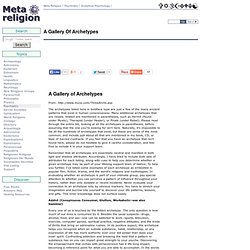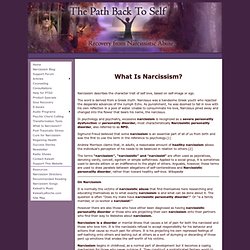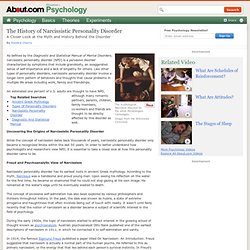

Psych Publications. The dynamics of threat, fear and intentionality in the conduct disorders: longitudinal findings in the children of women with post-natal depression. + Author Affiliations Author for correspondence (jonathan.hill@manchester.ac.uk) Abstract This paper considers how environmental threat may contribute to the child's use of avoidant strategies to regulate negative emotions, and how this may interact with high emotional reactivity to create vulnerability to conduct disorder symptoms.

CBT. Cognitive Behavioural Therapy (CBT) Worksheets, Handouts, Resources and Techniques. Custom Search Cognitive-Behavioural Therapy CBT looks at our thoughts, feelings and behaviours.

CBT therapists understand that by changing the way we think and act, we can affect the way we feel. Formulation worksheets Cognitive restructuring Information sheets Useful tools. DISTORTED THINKING. Mental Models. Thou shalt not commit logical fallacies. Thinking Styles. 6 Steps to Eliminate Limiting Beliefs. Photo by Stock Photo.

Cognitive Biases. How to Train Your Brain and Boost Your Memory Like a USA Memory Champion. 5 Logical Fallacies That Make You Wrong More Than You Think. The-Mind-Brain-Psycological. Cognitive Behaviour Therapy. Top 10 Thinking Traps Exposed. Our minds set up many traps for us. Www.cci.health.wa.gov.au/docs/Psychosis Manual.pdf.
50 Common Cognitive Distortions. 3. Negative predictions. Overestimating the likelihood that an action will have a negative outcome. 4. Underestimating coping ability. Underestimating your ability cope with negative events. 5. Thinking of unpleasant events as catastrophes. Links to online CBT resources « HealthSkills Weblog.
I have occasion to look for online resources from time to time – this week it’s been anxiety and CBT self-help, so I’ve been strolling through the internet and located some really great, evidence-based sites with excellent resources.

First one GET.gg – here Over 100 downloadable worksheets, all pdf documents, including ACT, Vicious Flower circle, formulation worksheets, sheets for challenging core beliefs – and I have hardly started listing!. Definitely worth going to if you’d like some well-designed, clear worksheets you can save onto your own computer. For a sample, click here for the Pain and Fatigue worksheet. Anxiety Toolkit. Cognitive Behavioural Therapy (CBT) Worksheets, Handouts and Resources.
Psychology. Wisdom of Crowds. CBT Training Lectures. Custom Search Tuesday, October 23, 2012 CBT Training Lectures Here are a series of excellent CBT training lectures from the North West London NHS Foundation Trust Postgraduate Programme in Cognitive Behavioural Psychotherapy.

Carl Jung. Carl Gustav Jung (/jʊŋ/; German: [ˈkarl ˈɡʊstaf jʊŋ]; 26 July 1875 – 6 June 1961), often referred to as C.

G. Jung, was a Swiss psychiatrist and psychotherapist who founded analytical psychology.[2] Jung proposed and developed the concepts of the collective unconscious, archetypes, and extraversion and introversion. His work has been influential not only in psychiatry but also in philosophy, anthropology, archeology, literature, and religious studies. Carl Gustav Jung: Theories of Personality. A Gallery Of Archetypes. From: The archetypes listed here in boldface type are just a few of the many ancient patterns that exist in human consciousness.

CG Jung Page. Carl Jung summary. Sigmund Freud. Sigmund Freud (/frɔɪd/;[2] German pronunciation: [ˈziːkmʊnt ˈfʁɔʏ̯t]; born Sigismund Schlomo Freud; 6 May 1856 – 23 September 1939) was an Austrian neurologist, now known as the father of psychoanalysis.

Freud qualified as a doctor of medicine at the University of Vienna in 1881,[3] and then carried out research into cerebral palsy, aphasia and microscopic neuroanatomy at the Vienna General Hospital.[4] Upon completing his habilitation in 1895, he was appointed a docent in neuropathology in the same year and became an affiliated professor (professor extraordinarius) in 1902.[5][6] WHAT IS NARCISSISM. Narcissism describes the character trait of self love, based on self-image or ego.

The word is derived from a Greek myth. Narcissus was a handsome Greek youth who rejected the desperate advances of the nymph Echo. Narcissism. The History of Narcissistic Personality Disorder. As defined by the Diagnostic and Statistical Manual of Mental Disorders, narcissistic personality disorder (NPD) is a pervasive disorder characterized by symptoms that include grandiosity, an exaggerated sense of self-importance and a lack of empathy for others.

Like other types of personality disorders, narcissistic personality disorder involve a longer term pattern of behaviors and thoughts that cause problems in multiple life areas including work, family and friendships. An estimated one percent of U.S. adults are thought to have NPD, although many romantic partners, parents, children, family members, co-workers and friends are thought to be directly affected by this disorder as well. Narcissism. History of narcissism. Since then, narcissism has become a household word; in analytic literature, given the great preoccupation with the subject, the term is used more than almost any other'.[1] The meaning of narcissism has changed over time. Today narcissism "refers to an interest in or concern with the self along a broad continuum, from healthy to pathological ... including such concepts as self-esteem, self-system, and self-representation, and true or false self".[2] Before Freud[edit]
15 Common Defense Mechanisms. In some areas of psychology (especially in psychodynamic theory), psychologists talk about “defense mechanisms,” or manners in which we behave or think in certain ways to better protect or “defend” ourselves. Defense mechanisms are one way of looking at how people distance themselves from a full awareness of unpleasant thoughts, feelings and behaviors. Psychologists have categorized defense mechanisms based upon how primitive they are. The more primitive a defense mechanism, the less effective it works for a person over the long-term.
Defense Mechanisms, descriptions and examples of different types. Top 7 Psychological Defense Mechanisms. Health. Freud’s defense mechanisms. Three Essays on the Theory of Sexuality. Three Essays on the Theory of Sexuality (German: Drei Abhandlungen zur Sexualtheorie), sometimes titled Three Contributions to the Theory of Sex, is a 1905 work by Sigmund Freud which advanced his theory of sexuality, in particular its relation to childhood.
Synopsis[edit] Freud's book covered three main areas: sexual perversions; childhood sexuality; and puberty.[1] Sexual aberrations[edit] Freud began his first essay, on "The Sexual Aberrations", by distinguishing between the sexual object and the sexual aim — noting that deviations from the norm could occur with respect to both.[2] The sexual object is therein defined as a desired object, and the sexual aim as what acts are desired with said object. Pschodynamic theorists and personality formation. Mentalizing. Microsoft PowerPoint - Training Slides Theory 2010.ppt.